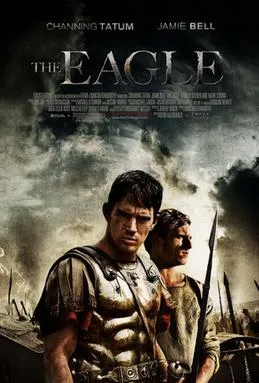Historical accuracy of The Eagle

Historical accuracy of The Eagle

Characters
Marcus Flavius Aquila
Marcus is the fictional protagonist of the novel, created by Rosemary Sutcliff. He represents Roman officers serving in Britain and embodies themes of honor and duty.
Esca
Esca is a fictional character from the novel. He represents the native Britons subjugated by Rome and explores themes of loyalty, freedom, and cultural conflict through his relationship with Marcus.
Uncle Aquila
A fictional character from the novel providing Marcus a home base and representing established Romano-British life south of the frontier.
Guern (Lucius Caius Metellus)
A fictional character from the novel representing the idea of Roman soldiers lost or assimilated north of the Wall. His Roman identity is part of the fiction.
Liathan, Seal Prince
The primary antagonist representing the "wild" tribes of Caledonia. Both the character and the "Seal People" tribe are fictional creations of the novel/film.
Marcus Flavius Aquila Sr.
A fictional character created by Sutcliff to provide Marcus's core motivation. The historical commander of the Ninth Legion at the time of its disappearance is unknown.
More characters
Cradoc
A fictional character representing native resistance to Roman rule within the province of Britannia.
Horned Warrior / Seal Priest
Represents the spiritual or leadership aspect of the fictional Seal People, emphasizing their perceived 'otherness'.
Various Roman Soldiers
Fictional characters representing the typical soldiers serving on the British frontier.
Various Caledonian Tribespeople
Fictional representations of the diverse indigenous groups living north of Hadrian's Wall, depicted largely through a Roman lens as 'barbarians'.
Story
Roman Britain setting, Hadrian's Wall frontier (c. 140 AD)
The film is accurately set in Roman Britain about two decades after the construction of Hadrian's Wall, depicting it as the northern frontier of the formal province.
Disappearance of the Ninth Legion Hispania in Caledonia
The Ninth Legion does disappear from Roman records around 120 AD. However, whether it was destroyed in a single catastrophic campaign in Caledonia as the novel/film posits is heavily debated by historians.
Loss of a Legion's Eagle standard being a major disgrace
The loss of an Aquila (Eagle standard) was considered a profound humiliation for the Roman legion and Rome itself. Efforts were sometimes made to recover lost standards.
Marcus commanding a fort / Defending against attack
Represents typical duties of a Roman officer on the frontier. While Marcus is fictional, such attacks by British tribes on Roman forts occurred, and the depiction of fort defense is plausible.
Marcus wounded and discharged
This event serves the fictional plot, enabling Marcus (a fictional character) to undertake his personal quest.
Quest beyond Hadrian's Wall to recover the lost Eagle
The central plot of Marcus and Esca's journey north to find the Eagle is entirely fictional, originating from Rosemary Sutcliff's novel.
Travel through Caledonian Highlands
While the quest is fictional, the film effectively portrays the rugged, challenging terrain north of Hadrian's Wall that travelers would have faced.
Encountering hostile tribes ("Seal People")
Romans did encounter various hostile tribes in Caledonia (basis in truth). The specific "Seal People" tribe, their customs, and their possession of the Eagle are fictional (fictional element).
Finding a Roman survivor (Guern) living among tribes
Guern is a fictional character; there is no historical evidence of Ninth Legion survivors being found living among Caledonian tribes in this manner.
Locating and stealing the Eagle standard from the Seal People
This sequence is entirely part of the fictional narrative derived from the novel.
Pursuit by Seal warriors
The dramatic chase sequence is part of the fictional plot.
Esca's loyalty and choice to help Marcus
Explores themes of honor and loyalty within the fictional relationship between Marcus and Esca (who are fictional characters).
Final battle against pursuers
The climactic fight where Roman survivors join Marcus is fictional, serving as a resolution to the novel/film's plot.
Successful return of the Eagle / Restoring honor
The Eagle of the Ninth Legion was never historically recovered. The film's ending fulfills the fictional quest's objective.
Setting
Roman Britain, Hadrian's Wall Frontier (c. 140 AD)
The film accurately portrays the setting of northern Roman Britain, with Hadrian's Wall as a tangible, formidable border marking the edge of the empire.
Roman Fort architecture and layout
The design of the Roman fort where Marcus serves appears consistent with archaeological evidence for auxiliary forts in Roman Britain (timber/earth construction typical).
Caledonian landscapes (Scottish Highlands)
Filmed largely in Scotland, the movie showcases the authentic rugged, misty, and challenging terrain that characterized Caledonia north of the Wall.
Depiction of Caledonian tribes (Seal People) / Settlements
Since the Seal People are fictional, their specific appearance, language (using Gaelic), and settlement design are speculative, drawing on general Iron Age British/Celtic culture but not precisely historical.
Roman military equipment (armor, weapons)
Roman legionary/auxiliary equipment, including lorica segmentata and hamata armor, helmets, shields (scuta), swords (gladii), and javelins (pila), appears generally accurate for the period.
Briton / Caledonian equipment (weapons, attire, chariots)
Depicts warriors with spears, shields, some swords, furs/simple clothing, and woad-like body paint. Chariots were used earlier by Britons but less likely by 140 AD deep in Caledonia; depiction is somewhat generic 'tribal'.
Atmosphere of Roman frontier life
Effectively conveys the sense of isolation, discipline, constant vigilance, and cultural friction inherent in military life on the edge of the Roman Empire.
Travel and survival conditions
Realistically portrays the difficulties of travel on foot through challenging northern terrain, including weather and reliance on local knowledge (Esca).
Cultural clash (Roman vs. Native)
Highlights the stark differences in culture, values, and worldview between the Roman occupiers/administrators and the indigenous tribal peoples of Britain and Caledonia.
